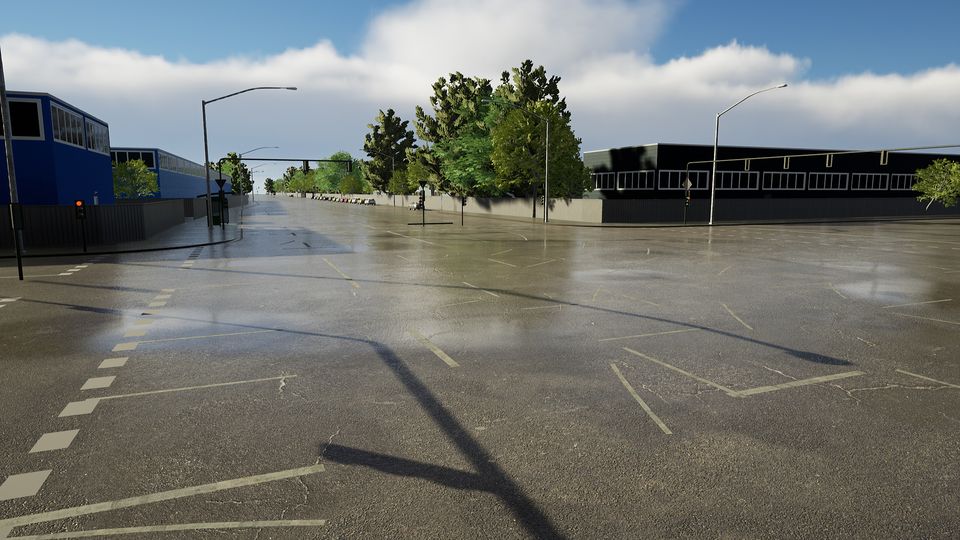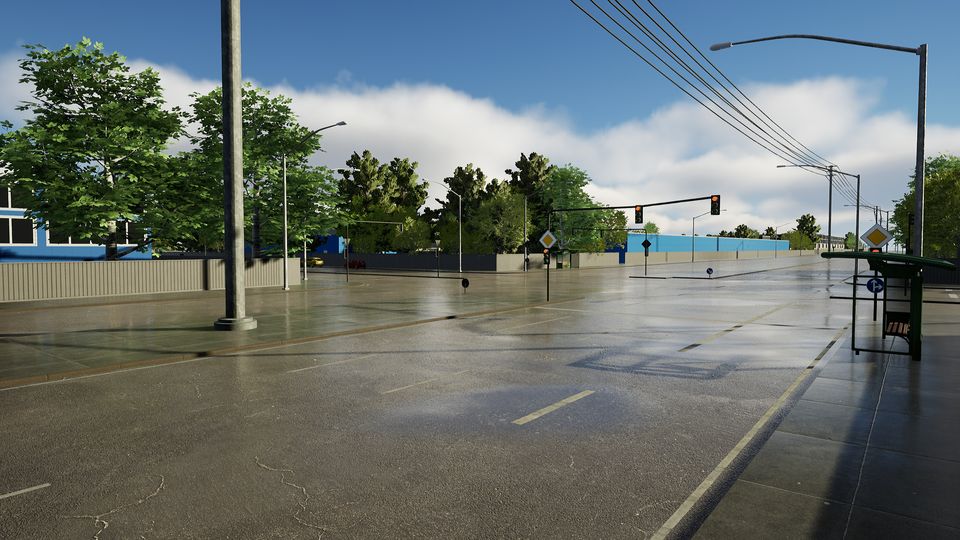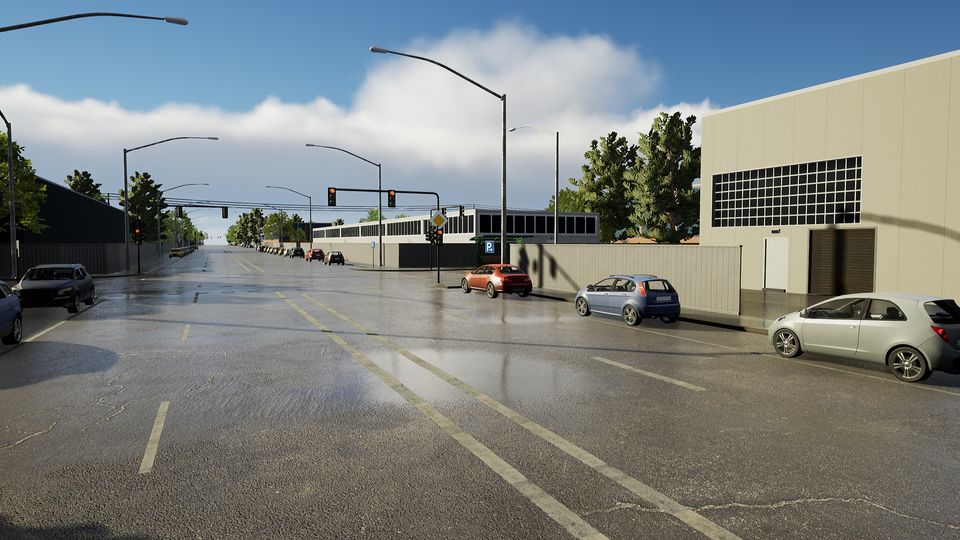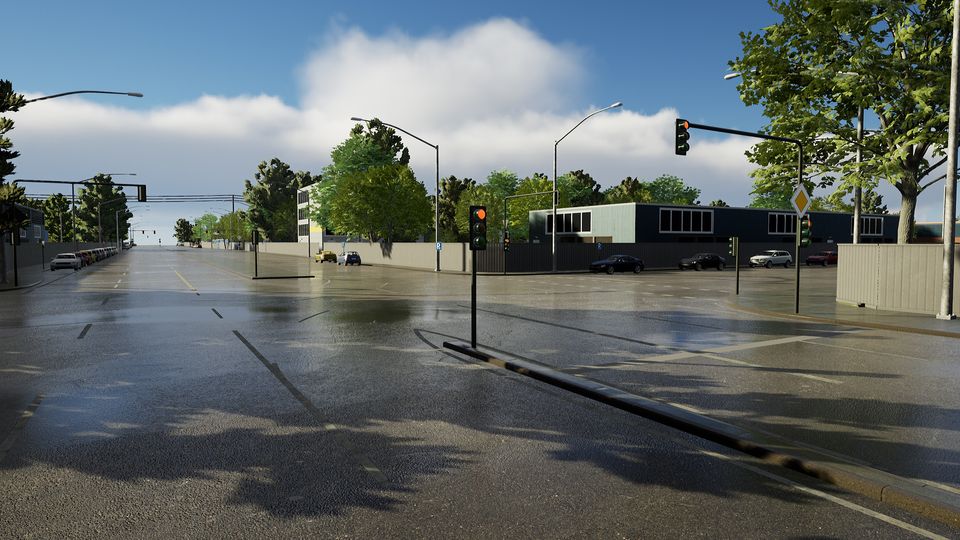Expert Talk with AnteMotion: Rules vs Reality – Procedural Environment Generation
July 25th, 2021 | by GEONATIVES
(4 min read)
As so often in life, rules may clash with reality. But in simulation and geodata business, rules are an essential part of creating reality’s digital twin. Applied on a larger scale in a tool chain, rule-based procedural environment generation is a convenient way of increasing the amount of data for developing, training, and testing mobility systems.
In early July 2021, GEONATIVES met online with Luca Gasbarro of AnteMotion to talk about his experience and strategy with respect to procedurally generated environments.

AnteMotion is a provider of, but not limited to, a simulation platform that consists of a simulation framework, an Unreal-based render engine, and a procedural environment generation toolset. Everything is accompanied by corresponding engineering services.
Our main interest was on the procedural generation tools. As we learned, AnteMotion is following four different paths:
- Scrape sources of GIS data (i.e., HERE HD Live Maps, TomTom HD Maps, etc.) to create automatically the OpenDRIVE road network file.
- Use an (either manually modelled or from automatical scraper) OpenDRIVE file’s semantic road information up to the sidewalks (inclusive) to generate a virtual world around this core network based and high level semantical rules, so that the same roads may be surrounded by residential, industrial, urban and other content; lane attributes, road marks, traffic signs and traffic lights are extracted from the OpenDRIVE file itself. The pipeline can be extended and personalized by including custom procedural rules. (For more details, see “Procedural Worlds – Modeling of infinite 3D scenario variations for virtual AV/ADAS testing“)
- Use the same information as above (2), plus other OpenDRIVE file’s information about objects (OpenDRIVE comes with object tags for elements in the general 3d environment which are not relevant to the so-called “road logics”). For various customers, “user data tags” may be included in the files that allow for the specification of certain road-side features and for the harmonization of libraries of 3d objects. “User data tags” in the OpenDRIVE file can be customized on user needs to specific road-side features or for the harmonization of 3d assets libraries.
- Start with the same pipeline as in point (2), including also other sources for extra data information (e.g. GIS databases, OpenStreetMap, terrain elevation maps, etc.) to create a “digital sibling” of the environment.
For more in-depth technical explanation the functionality of the pipeline, see “Procedural Worlds – How It Works (In-Depth Overview“).
The key to any of these paths – and one of our key questions concerning procedural generation – is the definition of the applicable rules. AnteMotion is performing their own development with a more-or-less generic approach also in terms of country-specific adaptation. This means, that, as of now, surroundings do not represent a specific country’s features – they look quite Western European, though – but aim to provide an object composition that feels “natural” to the driver – and the sensors. In the long term, more country feature packages could be added.
The rules may not only apply to the selection of ready-to-go 3d objects from a given library but also to a generation of features from scratch along footprints. Buildings, for example, may be fit exactly into the spaces given in the corresponding map data. The number of floors, the type of roof and façade etc. may be determined based on the applicable rule set. Such content creation was originally introduced in the computer games and movie industry to generate realistic looking cities and is now more and more utilized in the simulator domain. Procedural’s CityEngine (now part of ESRI) and Trian3DBuilder are further examples of content creation tools which provide procedural environment generation features.
Performance is a big topic when generating virtual environments, especially if these environments are to be used in real-time sensitive applications like hardware-in-the-loop (HiL) or driver-in-the-loop (DiL) setups. In order to achieve high throughput, AnteMotion uses state-of-the-art instantiation techniques for repetitive objects (vegetation, signs, signals etc.) that allow for a small memory footprint and short rendering times. Baking everything into one large 3d model would also prevent the system from adding, removing or replacing instantiated objects on-the-fly (e.g. for modifying the signage at an intersection).
Like almost everybody who is concerned with environment generation, AnteMotion is also facing the typical issues of assessing and guaranteeing the quality and accuracy of their input data (OpenDRIVE files, elevation data, map data in general). Since AnteMotion is not performing their own data acquisition services or map generation, they highly rely on data they receive from 3rd parties.
This brings us back to our frequently postulated key aspects in the data processing toolchain when trying to get requirements of different stakeholders aligned and taking the aspects of simulation into account. It’s all about the quality and reliability of the data!
We concluded from our talk with AnteMotion that procedural environment generation is a valid means to populate road networks with environment data in a quick fashion. Even providing variants of an environment for various simulation tasks is a more than just useful feature especially if you think about test scenario generation.
But there still is a lot to do: the harmonization of (commonly accepted) rules for environment generation according to a (country-specific) meta-type assignment (rural, urban etc.), unified material assignments (for sensor simulation), unified co-ordinate systems for external objects etc.
Procedural environment generation may not fulfill the strong criteria of creating a digital twin of reality, but it may very well serve in creating digital siblings that allow for quick provision of vast amounts of realistic data. If a use case does not require an exact re-creation of the reality, procedural content creation can help to generate a realistic environment. This has already been shown a few years ago in the Virtual World project. For stakeholders who try to cover entire event spaces – including environment information – these digital siblings will be a welcome addition to the family.



